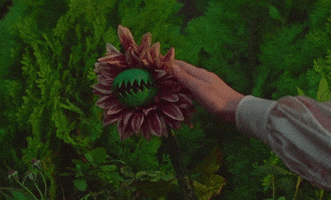I’m sowing seeds of this unusual variety today. It seems to have picked up the common name ‘Peach Frutescens’, but my research indicates that it is more likely intermediate between chinense and frutescens. I’m curious if anyone knows more. Maybe frutescens-lover @Pr0digal_son could help?
I’ll share what little I found. First, when I have an accession number, I always start there. The information is usually vague and terse, sometimes rendered inaccurate by time, but it represents our primary source for varieties whose original populations are lost or unknown; any additional information will have been added by the community to this foundation.
From CGN:
Classification: Capsicum chinense
Origin: Exp. North-eastern Brazil by B. Pickersgill of Reading Un. UK, Jan-May 1972
Botanic name given by institute: frutescens
Additional passport information: chinense with some frutescens characteristics
Photos:




I’m not sure why “botanic name given by institute” contradicts the classification. Maybe one came first and the other is a correction?
It’s interesting that one of their photos is from Christopher Phillips! His photo identifies it as frutescens, but he seems to have doubted it himself, for instance in this post here at THP:
The post is dated just two days after the photo! This is wild speculation, but I wonder if Chris grows out CGN varieties and, as thanks for access to the seeds, contributes back up-to-date photos and information. It would make sense to use their own classification for the photo, even if he had doubts. Thus, maybe the original classification was frutescens and was changed to “chinense with some frutescens characteristics” in 2010, in reaction to Chris’ grow.
An additional source of photos is this glog of @CaneDog’s, which has several photos at different stages of growth scattered throughout.
That’s all I have. I couldn’t find any seed venders selling this, at the moment. I got my seeds via @TexasHotPeppers and the Seed Train, but it’s not listed on his site. If my grow turns out well, I will add detailed photos as I go along to help pin down this intriguing variety.
I’ll share what little I found. First, when I have an accession number, I always start there. The information is usually vague and terse, sometimes rendered inaccurate by time, but it represents our primary source for varieties whose original populations are lost or unknown; any additional information will have been added by the community to this foundation.
From CGN:
Classification: Capsicum chinense
Origin: Exp. North-eastern Brazil by B. Pickersgill of Reading Un. UK, Jan-May 1972
Botanic name given by institute: frutescens
Additional passport information: chinense with some frutescens characteristics
Photos:
I’m not sure why “botanic name given by institute” contradicts the classification. Maybe one came first and the other is a correction?
It’s interesting that one of their photos is from Christopher Phillips! His photo identifies it as frutescens, but he seems to have doubted it himself, for instance in this post here at THP:
I tasted it tonight. I'm shocked how good it was. Major heat and good flavor. It's a huge producer too. The best part is there are very few seeds in the pods so they'd make a pretty pure powder w/o extracting them. I question the Frutescens designation, but whatever it is, I like it.
The post is dated just two days after the photo! This is wild speculation, but I wonder if Chris grows out CGN varieties and, as thanks for access to the seeds, contributes back up-to-date photos and information. It would make sense to use their own classification for the photo, even if he had doubts. Thus, maybe the original classification was frutescens and was changed to “chinense with some frutescens characteristics” in 2010, in reaction to Chris’ grow.
An additional source of photos is this glog of @CaneDog’s, which has several photos at different stages of growth scattered throughout.
That’s all I have. I couldn’t find any seed venders selling this, at the moment. I got my seeds via @TexasHotPeppers and the Seed Train, but it’s not listed on his site. If my grow turns out well, I will add detailed photos as I go along to help pin down this intriguing variety.
Last edited:

